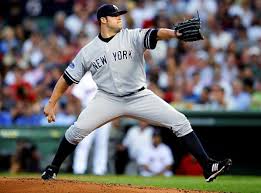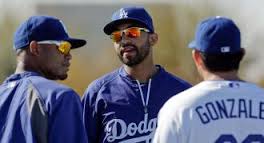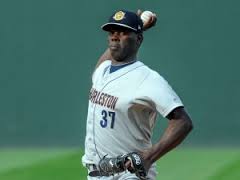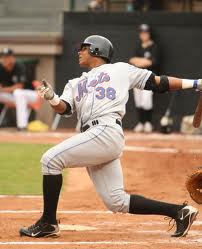With the big signing of Masahiro Tanaka by the New York Yankees on Wednesday, the market for free agency and trades could explode over the next several days. With that in mind, I was thinking about some deals that would make tremendous sense for several teams…although, they could just make sense to me. Regardless, here are some deals that I’d like to see made over the next few weeks before pitchers and catchers report.
Cincinnati Reds Trade Brandon Phillips to the New York Yankees for Brett Gardner
 Why This Trade Makes Sense: The Yankees clearly want to get back to the top, as their $155 million investment in Tanaka showed. With Brian Roberts, Kelly Johnson, and Scott Sizemore as the current options at second base, New York could use a more reliable name to replace Robinson Cano. While the Reds don’t have an immediate replacement ready for Phillips (outside of Henry Rodriguez or another position change for Billy Hamilton), they need to clear some payroll in order to lock up Mat Latos, Johnny Cueto, and Mike Leake, all of whom are eligible for free agency after the 2015 season, as well as Homer Bailey, who will be a free agent after the 2014 season. Phillips, who is due $50 million over the next four years, could be a bargain based on the current market, while his ability to play defensively at an elite level will provide quite a bit of value, as well. Gardner is unlikely to provide the on-base skills that Shin-Soo Choo provided last season in Cincinnati, but he would provide elite-level defensive skills, speed, and solid on-base skills (career OBP of .352). Gardner, earning $5.6 million in 2014 prior to reaching free agency after the season, would be an upgrade over a 2014 version of Hamilton, while providing quite a bit of financial flexibility to shore up the rotation for the coming seasons in Cincinnati. Even if Cincinnati had to chip in $10 million in salary relief, it would be an interesting deal for both clubs.
Why This Trade Makes Sense: The Yankees clearly want to get back to the top, as their $155 million investment in Tanaka showed. With Brian Roberts, Kelly Johnson, and Scott Sizemore as the current options at second base, New York could use a more reliable name to replace Robinson Cano. While the Reds don’t have an immediate replacement ready for Phillips (outside of Henry Rodriguez or another position change for Billy Hamilton), they need to clear some payroll in order to lock up Mat Latos, Johnny Cueto, and Mike Leake, all of whom are eligible for free agency after the 2015 season, as well as Homer Bailey, who will be a free agent after the 2014 season. Phillips, who is due $50 million over the next four years, could be a bargain based on the current market, while his ability to play defensively at an elite level will provide quite a bit of value, as well. Gardner is unlikely to provide the on-base skills that Shin-Soo Choo provided last season in Cincinnati, but he would provide elite-level defensive skills, speed, and solid on-base skills (career OBP of .352). Gardner, earning $5.6 million in 2014 prior to reaching free agency after the season, would be an upgrade over a 2014 version of Hamilton, while providing quite a bit of financial flexibility to shore up the rotation for the coming seasons in Cincinnati. Even if Cincinnati had to chip in $10 million in salary relief, it would be an interesting deal for both clubs.
Baltimore Orioles Sign A.J. Burnett to a one-year, $14 million deal
 Why This Signing Makes Sense: In 2012, the Baltimore Orioles surprised the world by contending and finishing 2nd in the AL East with 93 wins. In 2013, there was a slight regression, as the team dipped to 85 wins after doing very little over the offseason. The Orioles have been very active in the minor league free agent market this winter, but they could use a splash, and Burnett would be a tremendous addition to the club’s rotation. Chris Tillman, Wei-Yin Chen, Miguel Gonzalez, Bud Norris, and Kevin Gausman make a good, young rotation, but Burnett would be the anchor for the staff, and his presence would allow the club to move Norris to a (more appropriate) bullpen role. Burnett is from Maryland and he has been rumored to be retiring if he doesn’t re-sign with Pittsburgh, but Baltimore is close to home and he can keep his wife happy, and the spare change for one year would be worth it for both sides. Burnett rebuilt his value with two tremendous seasons with the Pirates, and he is worth a one-year deal for Baltimore for another shot at the AL East for the tattooed right-hander. Sure, it seems like it is going to be Pittsburgh or bust, but the Orioles are contenders with a healthy Manny Machado and consistent production from Adam Jones, Chris Davis, and Matt Wieters – the O’s need to do their due diligence here.
Why This Signing Makes Sense: In 2012, the Baltimore Orioles surprised the world by contending and finishing 2nd in the AL East with 93 wins. In 2013, there was a slight regression, as the team dipped to 85 wins after doing very little over the offseason. The Orioles have been very active in the minor league free agent market this winter, but they could use a splash, and Burnett would be a tremendous addition to the club’s rotation. Chris Tillman, Wei-Yin Chen, Miguel Gonzalez, Bud Norris, and Kevin Gausman make a good, young rotation, but Burnett would be the anchor for the staff, and his presence would allow the club to move Norris to a (more appropriate) bullpen role. Burnett is from Maryland and he has been rumored to be retiring if he doesn’t re-sign with Pittsburgh, but Baltimore is close to home and he can keep his wife happy, and the spare change for one year would be worth it for both sides. Burnett rebuilt his value with two tremendous seasons with the Pirates, and he is worth a one-year deal for Baltimore for another shot at the AL East for the tattooed right-hander. Sure, it seems like it is going to be Pittsburgh or bust, but the Orioles are contenders with a healthy Manny Machado and consistent production from Adam Jones, Chris Davis, and Matt Wieters – the O’s need to do their due diligence here.
Toronto Blue Jays Sign Matt Garza to a five-year, $60 million deal (I know he was rumored to have signed with Milwaukee for four-years, $52 million pending a physical, but it isn’t official…yet)
 Why This Signing Makes Sense: The Jays need another solid option in their rotation to compliment R.A. Dickey, Mark Buehrle, and Brandon Morrow, so that their offense isn’t wasted on sloppy rotation options like Esmil Rogers, Ramon Ortiz, Aaron Laffey, and Rickey Romero, who combined to make 27 starts last season. While Garza has some injury concerns, the Blue Jays have already given him a dynamic weapon – Dioner Navarro. With Navarro as his catcher, Garza has logged 338.1 innings and managed a 3.25 ERA and a 1.26 WHIP, while Garza has posted a 4.07 ERA and a 1.29 WHIP with anyone else behind the dish. While there is risk involved due to Garza spending 170 team games on the disabled list the last three seasons with right shoulder and elbow injuries, the Jays need a pitcher who is capable of pitching in the AL East (Garza has done it before), can toss 180 or more innings (Garza has done it four times), and would be a significant upgrade over Rogers, Todd Redmond, and J.A. Happ, while the club waits for Marcus Stroman, Aaron Sanchez, Alberto Tirado, Daniel Norris, and Sean Nolin to reach the majors. Garza may not be a number one starter, but he is a strong number two or three option on a club that should compete with an absolutely loaded offensive group.
Why This Signing Makes Sense: The Jays need another solid option in their rotation to compliment R.A. Dickey, Mark Buehrle, and Brandon Morrow, so that their offense isn’t wasted on sloppy rotation options like Esmil Rogers, Ramon Ortiz, Aaron Laffey, and Rickey Romero, who combined to make 27 starts last season. While Garza has some injury concerns, the Blue Jays have already given him a dynamic weapon – Dioner Navarro. With Navarro as his catcher, Garza has logged 338.1 innings and managed a 3.25 ERA and a 1.26 WHIP, while Garza has posted a 4.07 ERA and a 1.29 WHIP with anyone else behind the dish. While there is risk involved due to Garza spending 170 team games on the disabled list the last three seasons with right shoulder and elbow injuries, the Jays need a pitcher who is capable of pitching in the AL East (Garza has done it before), can toss 180 or more innings (Garza has done it four times), and would be a significant upgrade over Rogers, Todd Redmond, and J.A. Happ, while the club waits for Marcus Stroman, Aaron Sanchez, Alberto Tirado, Daniel Norris, and Sean Nolin to reach the majors. Garza may not be a number one starter, but he is a strong number two or three option on a club that should compete with an absolutely loaded offensive group.
Philadelphia Phillies Sign Ubaldo Jimenez to a five-year, $85 million deal
Why This Signing Makes Sense: The Phillies first round pick, seventh overall, is protected, so while Jimenez would require draft-pick compensation, it would only be a second round pick going to Cleveland for Jimenez. After a tremendous second half in 2013 (1.82 ERA, 1.14 WHIP over 84 innings), Jimenez rebuilt his value, and, at the age of 30, would be a solid right-handed option for the Phillies to place between Cole Hamels and Cliff Lee. Jimenez has had some success during his career in the NL East:
| I | Split | W | L | GS | GF | CG | SHO | IP | H | R | ER | HR | BB | SO | ||||
|---|---|---|---|---|---|---|---|---|---|---|---|---|---|---|---|---|---|---|
| Atlanta Braves | 3 | 5 | 3.79 | 9 | 0 | 1 | 1 | 54.2 | 47 | 25 | 23 | 6 | 28 | 66 | 1.372 | 10.9 | 2.36 | |
| Miami Marlins | 1 | 2 | 4.07 | 5 | 0 | 0 | 0 | 24.1 | 23 | 19 | 11 | 1 | 16 | 31 | 1.603 | 11.5 | 1.94 | |
| New York Mets | 2 | 3 | 3.40 | 6 | 0 | 0 | 0 | 39.2 | 27 | 15 | 15 | 4 | 21 | 29 | 1.210 | 6.6 | 1.38 | |
| Washington Nationals | 5 | 1 | 2.61 | 7 | 0 | 0 | 0 | 48.1 | 39 | 14 | 14 | 1 | 16 | 36 | 1.138 | 6.7 | 2.25 |
For those who don’t want to do the math, Jimenez is 11-11 with a 3.39 ERA, 1.30 WHIP, and a 162:81 K:BB over 167 innings and 27 starts, and while that isn’t perfect, especially in a ballpark that is more favorable to hitters, Jimenez should, at least, be worth the money as an innings eater if he isn’t elite like he was in the second half of 2013. The Phillies may not be contenders, but they’ll always be spenders. They don’t have any arms ready in their system and Jimenez would be a huge upgrade over Roberto Hernandez and Ethan Martin, who appear to be options for the rotation currently.
Oakland Athletics Sign Nelson Cruz to a three-year, $27 million deal
Why This Signing Makes Sense: The Cruz market appears nearly dead after there was draft-pick compensation added to a PED suspension, but Cruz is still just 33 and he is coming off of an All-Star season with solid production (27 home runs and 76 RBI in just 109 games). With very little interest and risk involved, it’s the perfect opportunity for Oakland to swoop in and make an interesting signing. While the club has some solid right-handed pop in Yoenis Cespedes and Josh Donaldson, the remainder of the lineup is filled with left-handed hitters, including Josh Reddick, Eric Sogard, Brandon Moss, as well as switch-hitters Coco Crisp and Jed Lowrie. Another right-handed, middle-of-the-order bat would be a tremendous addition, as Reddick or Moss could sandwich between Cruz and Cespedes, providing quite a bit of value and production for a team that struggles to find offense in a cavernous home ballpark. However, Cruz has struggled in Oakland, posting a .192/.248/.352 triple-slash in 202 career plate appearances there. The late first round pick and discounted contract, though, could be enough to overlook his struggles, while providing a little more punch to the Oakland lineup.
Texas Rangers Sign Bronson Arroyo to a two-year, $24 million deal
 Why This Signing Makes Sense: Arroyo has been homer prone in the past and doesn’t have the stuff to avoid bats, but he has averaged 211 innings pitched over the last nine seasons and is someone whom the Rangers could count on with Colby Lewis and Matt Harrison coming back from injuries and Derek Holland on the shelf until mid-2014. Arroyo survived in a bandbox in Cincinnati over the last eight seasons, so he would be just as likely to post 200-plus innings and an ERA around 4.00 in Texas, especially with spacious ballparks like those in Seattle, Oakland, and Anaheim within the division. There isn’t draft-pick compensation tied to Arroyo, and with Masahiro Tanaka gone and no real hope of acquiring David Price in a trade, the Rangers just need five starting pitchers, and Arroyo is a nice, reliable addition for the middle or back-end of the Texas rotation.
Why This Signing Makes Sense: Arroyo has been homer prone in the past and doesn’t have the stuff to avoid bats, but he has averaged 211 innings pitched over the last nine seasons and is someone whom the Rangers could count on with Colby Lewis and Matt Harrison coming back from injuries and Derek Holland on the shelf until mid-2014. Arroyo survived in a bandbox in Cincinnati over the last eight seasons, so he would be just as likely to post 200-plus innings and an ERA around 4.00 in Texas, especially with spacious ballparks like those in Seattle, Oakland, and Anaheim within the division. There isn’t draft-pick compensation tied to Arroyo, and with Masahiro Tanaka gone and no real hope of acquiring David Price in a trade, the Rangers just need five starting pitchers, and Arroyo is a nice, reliable addition for the middle or back-end of the Texas rotation.
Atlanta Braves Trade Alex Wood to the New York Yankees for Gary Sanchez
Why This Trade Makes Sense: C.C. Sabathia, Masahiro Tanaka, and Hiroki Kuroda make a great top three and Ivan Nova showed drastic improvements last season, but the Yankees are relying on David Phelps, Michael Pineda, Adam Warren, and Manny Banuelos at the back of the rotation in 2014. While Alex Wood has one of the more violent deliveries you’ll ever see, he has solid stuff and is ready to be productive immediately in a major league rotation. With Brandon Beachy healthy and David Hale and Gavin Floyd capable of filling the back of the Braves rotation, Wood could be expendable for Atlanta to seek a long-term option at catcher with the departure of Brian McCann to the Yankees via free agency. Evan Gattis has a lot of power and Christian Bethancourt has tremendous defensive skills, but neither seem like strong options as an everyday catcher for Atlanta. While Sanchez still needs some seasoning and he could use a change of scenery due to his makeup and maturity concerns, the Braves have several upcoming arms, as usual, and they have a long-term need at catcher. Sanchez could be the answer and the eventual elbow surgery that Wood will need is worth this type of deal for Atlanta, and the production that the Yankees get out of Wood could be useful, as well.


























